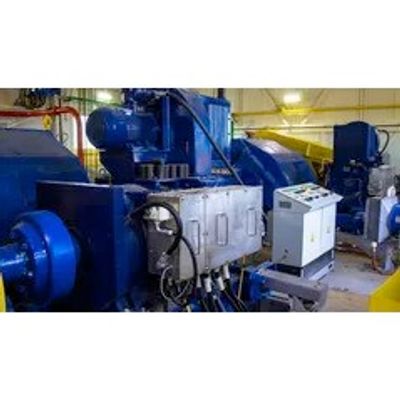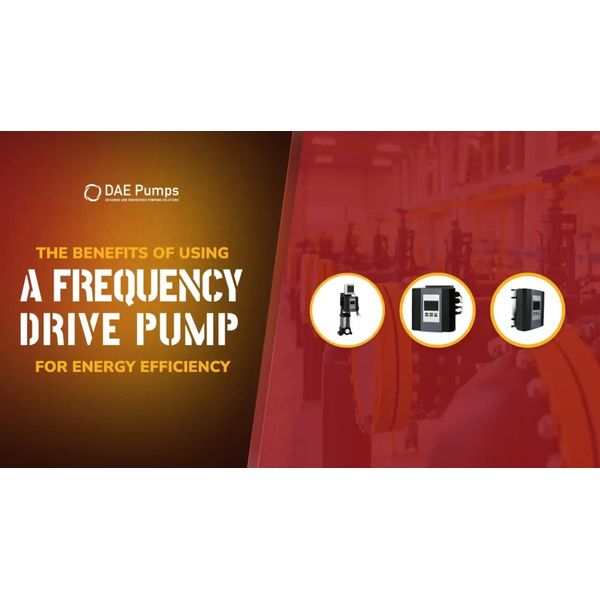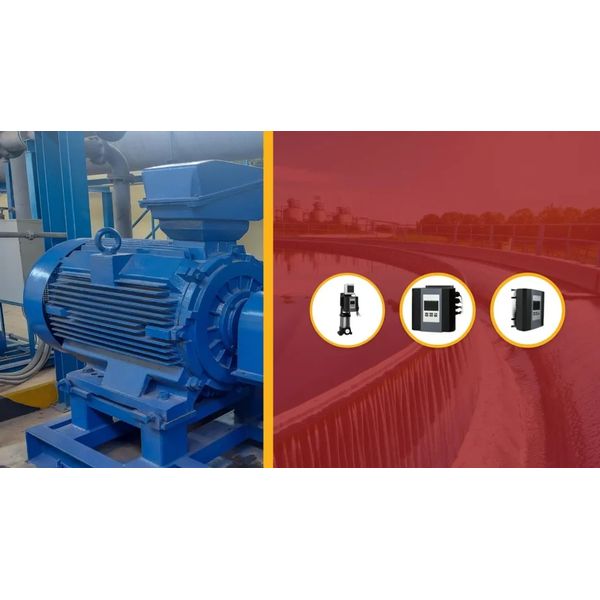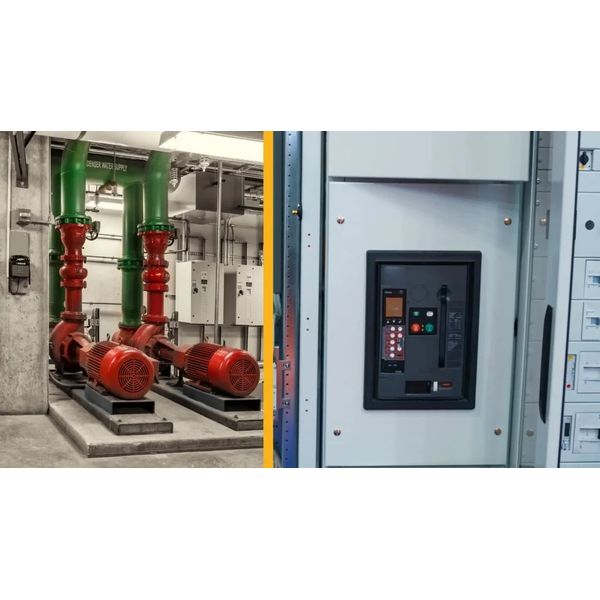


The Benefits of Using a Frequency Drive Pump for Energy Efficiency
Pumps are very important in many different settings, from factories and businesses to homes. They are used to move water and other liquids from one place to another. However, traditional pumps that run at a fixed speed can save energy and money. A better option is to use a frequency drive pump, which is also called a variable frequency drive pump or variable frequency drive well pump. These pumps have many benefits, especially when it comes to saving energy.


Frequency drive pumps have a special device called a variable frequency drive (VFD) attached to it. The VFD controls how fast the pump’s motor runs by changing the frequency and voltage of the electricity that powers it. This means the pump can run at different speeds, not just one fixed speed.
A regular fixed-speed pump always runs at its highest speed, even when it doesn’t need to. This wastes a lot of energy because the pump provides more flow than necessary.
It can also cause the pump and pipes to wear out faster because of the constant high pressure. A variable frequency drive pump, on the other hand, can change its speed to match what’s needed in real-time. When less flow is required, the VFD slows the motor down. When more flow is needed, it speeds the motor up. This allows the pump to work more efficiently, saving energy and reducing wear and tear.
One of the biggest benefits of using a drive pump is that it can save a lot of energy. In many cases, the need for flow changes over time. For example, in a water supply system, more water is needed in the morning when people are getting ready for work and in the evening when they come home.
But much less water is needed during the middle of the day and at night. With a fixed-speed pump, the pump would run at full speed all the time, wasting a lot of energy when less water is needed. But a variable-frequency drive pump can slow down during these times, using less energy.The energy savings can be really big.
Studies have found that using a variable frequency drive well pump can use 30-50% less energy than a fixed-speed pump. Sometimes, the savings can be even higher. These energy savings also mean cost savings.
How much you save will depend on the specific situation and how much electricity costs, but it’s common for a drive pump to pay for itself through energy savings within a short time, often 1-2 years.
Drive pumps also provide better control over the pumping process. With a fixed-speed pump, the only way to control the flow is to restrict it using valves.
This wastes energy and only provides a little control. A variable frequency drive pump, however, allows you to control the flow precisely by changing the pump’s speed. This is especially helpful in situations where the flow needs to stay at a specific level, like in a chemical factory or an irrigation system.
This better control can also improve the whole system’s performance. For example, in a water supply system, a variable frequency drive well pump can help keep the pressure steady even when the demand changes. This can make things work better for the user and reduce the risk of damage to the pipes from too much pressure.
Drive pumps can also help reduce maintenance needs and prolong the life of pumping equipment. In a fixed-speed pumping system, the pump and motor are always running at full speed, which can cause them to wear out faster.
The high pressure can also put a lot of strain on the pipes and other parts. A variable frequency drive pump reduces this wear and tear by letting the pump run at slower speeds when less flow is needed. This can make the pump, motor, and other parts of the system last longer, reducing maintenance costs and downtime.
VFDs also have a soft-start feature that helps reduce wear and tear. In a fixed-speed system, the pump starts at full speed right away, which can cause mechanical shock and stress. A VFD allows the pump to start gradually, slowly increasing the speed, which reduces this mechanical stress.
Key differences between Frequency drive pumps and traditional pumps in terms of performance

The key differences between frequency drive pumps (also known as variable frequency drive or VFD pumps) and traditional fixed-speed pumps in terms of performance are:
Energy Efficiency
One of the main advantages of drive pumps is their superior energy efficiency compared to traditional pumps.
- VFD pumps can adjust their speed to match the actual demand, consuming less energy during periods of low flow. This can result in energy savings of 30-50%.
- In contrast, fixed-speed pumps always run at full speed regardless of demand, wasting significant energy.
Process Control
Frequency drive pumps provide much better process control than traditional pumps.
- The speed of a VFD pump can be precisely controlled to maintain constant pressure, flow, or other parameters as demand fluctuates, improving overall system performance.
- Traditional pumps can only control flow by using inefficient throttling valves. They cannot automatically adjust to changes in demand.
Wear and Tear
VFD pumps experience less wear and tear than fixed-speed pumps.
- By running at lower speeds during low-demand periods, drive pumps reduce strain on the pump, motor, and other components, extending equipment life.
- The soft-start capability of VFDs also reduces mechanical stress from start-up.
- Constantly running at full speed causes fixed-speed pumps to wear out faster.
The key performance advantages of frequency drive pumps over traditional pumps are significantly improved energy efficiency, more precise process control to match demand, and reduced wear enabling longer equipment life. The ability of VFDs to adjust pump speed provides benefits that fixed-speed pumps simply cannot match.

In addition to saving energy, providing better process control, and reducing maintenance, these pumps have several other benefits:
- Flexibility: VFDs allow pumps to run at a wide range of speeds, allowing more flexibility in the system’s design and operation.
- Less Noise: Pumps running at slower speeds usually make less noise, which can be helpful in places where noise is a problem.
- Preventing Cavitation: By controlling the pump’s speed, VFDs can help avoid cavitation, a damaging thing that can happen when a pump is running too far from its best efficiency point.
- Better Power Factor: VFDs can help improve the pumping system’s power factor, reducing the load on the electrical system and avoiding extra utility company fees.
Frequency drive pumps, also known as variable frequency drive pumps or variable frequency drive well pumps, have many advantages over traditional fixed-speed pumps.
By letting the pump run at different speeds to match what’s actually needed, these pumps can save a lot of energy, provide better process control, reduce maintenance, and make equipment last longer.
While a frequency drive pump may cost more upfront than a fixed-speed pump, the long-term savings in energy and maintenance costs often make it a smart investment.
As energy costs continue to rise and businesses and people look for ways to reduce their impact on the environment, the use of variable frequency drive pumps is likely to continue growing. If you’re thinking about getting a new pumping system or upgrading an existing one, a variable frequency drive pump is definitely worth considering. The potential benefits in terms of energy efficiency, performance, and reliability are significant.
The adoption of variable frequency drive pumps, including variable frequency drive well pumps, represents a significant advancement in pumping technology. These systems not only offer substantial energy savings and improved process control but also contribute to the sustainability goals of businesses and individuals by reducing energy consumption and extending equipment life.
The upfront cost of these pumps is often offset by the long-term savings in energy and maintenance, making them a prudent investment. As industries continue to prioritize efficiency and environmental responsibility, the role of variable frequency drive pumps is likely to grow, offering a versatile and effective solution for a wide range of applications.
